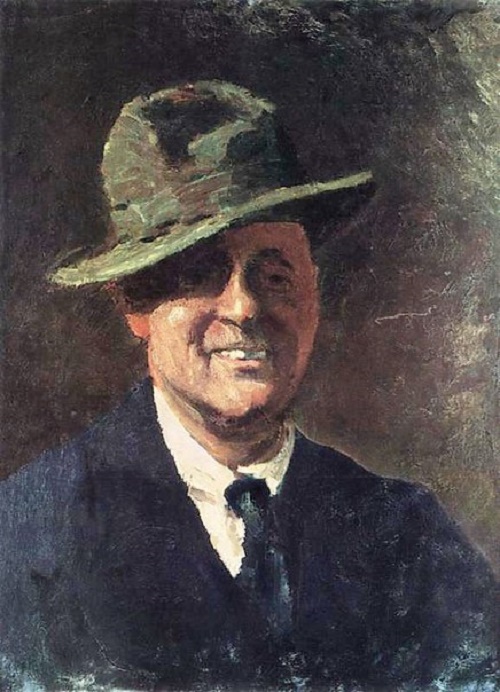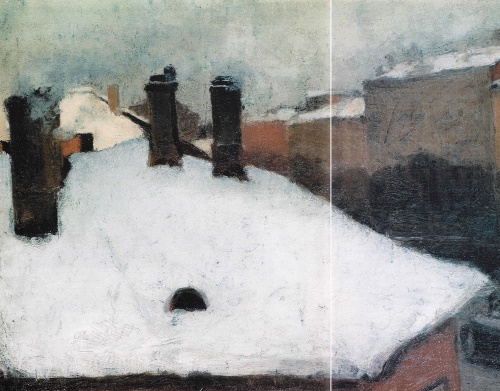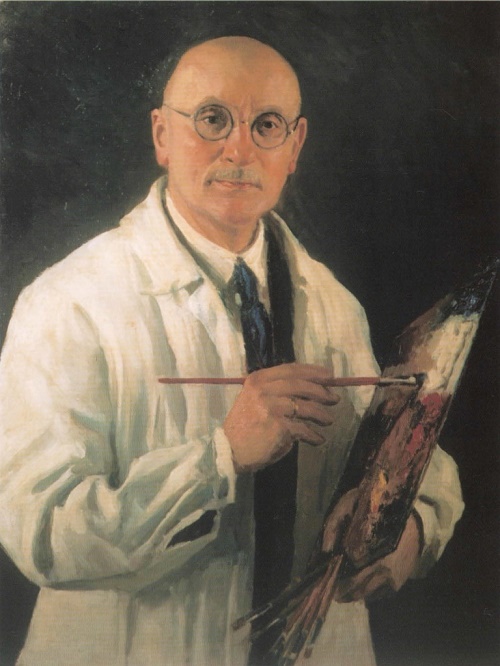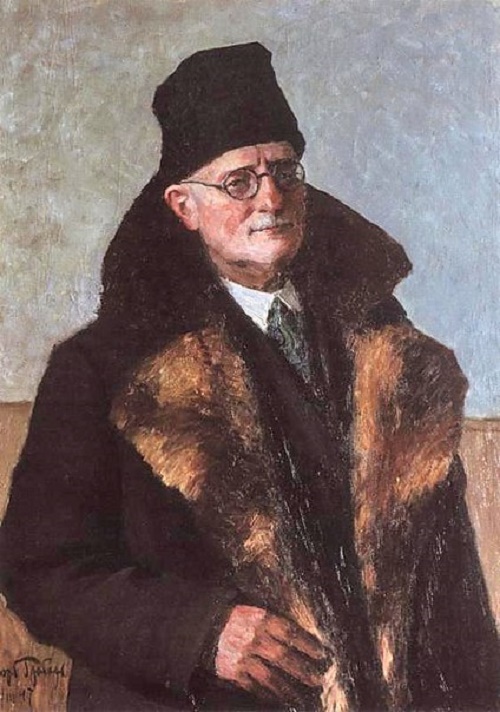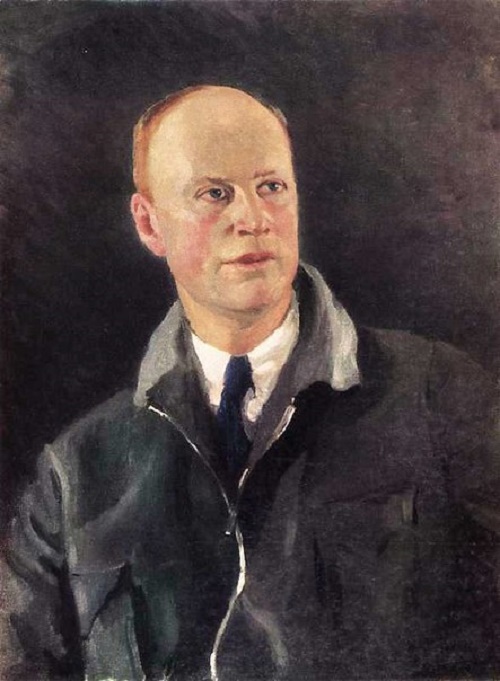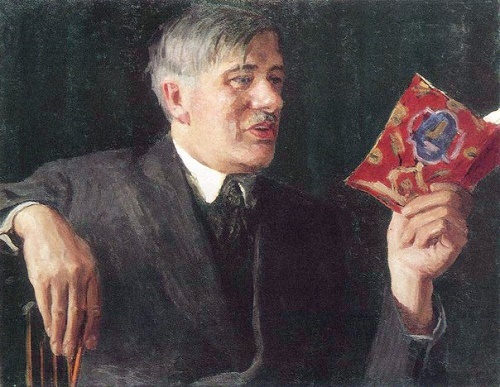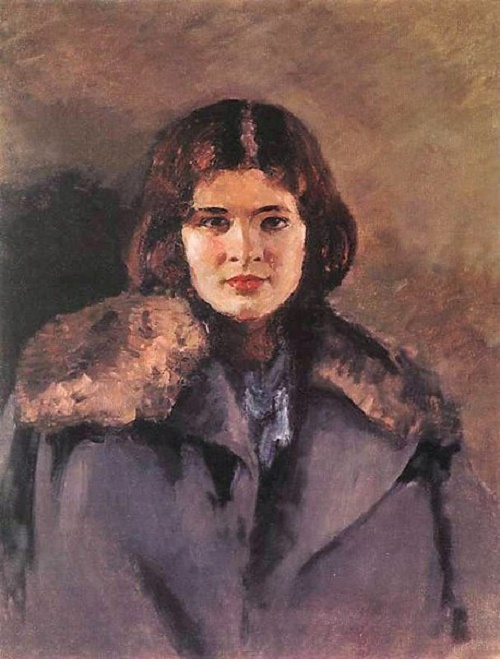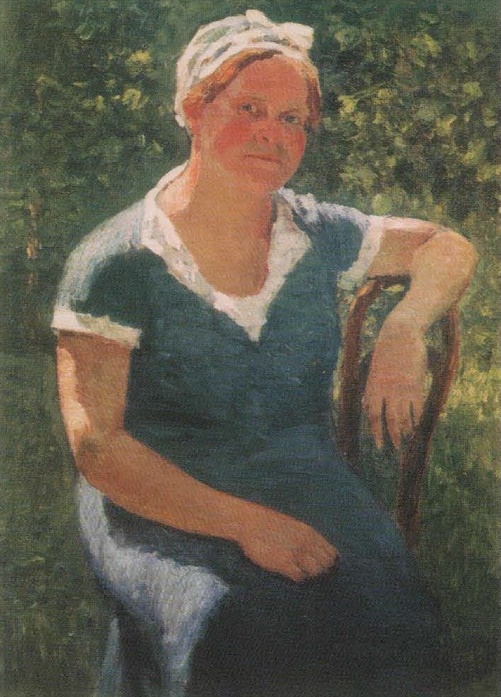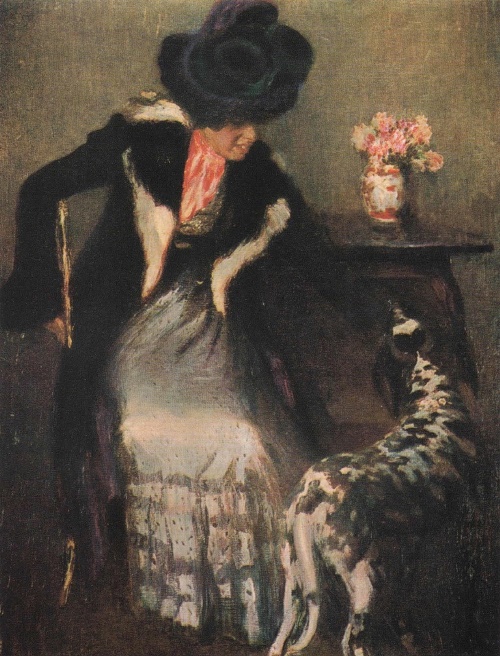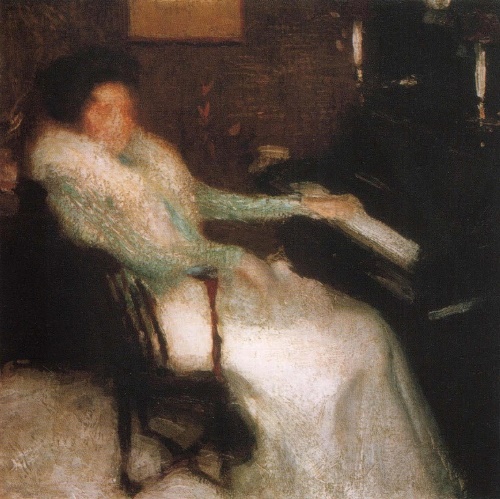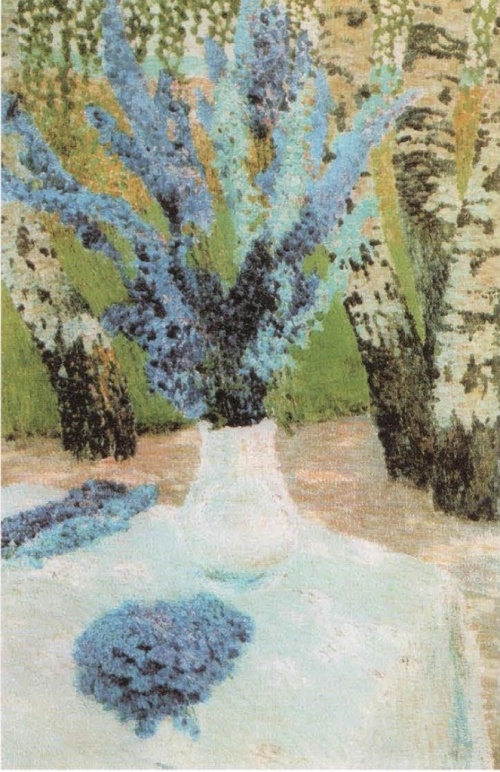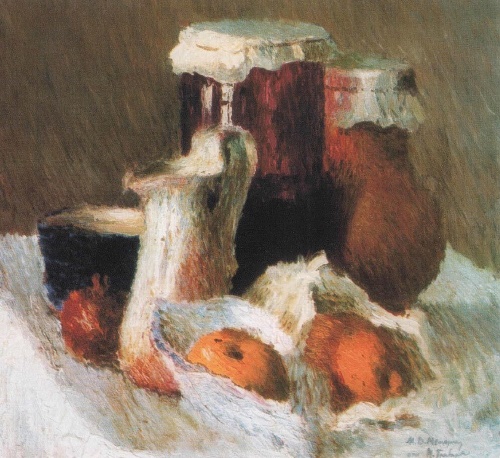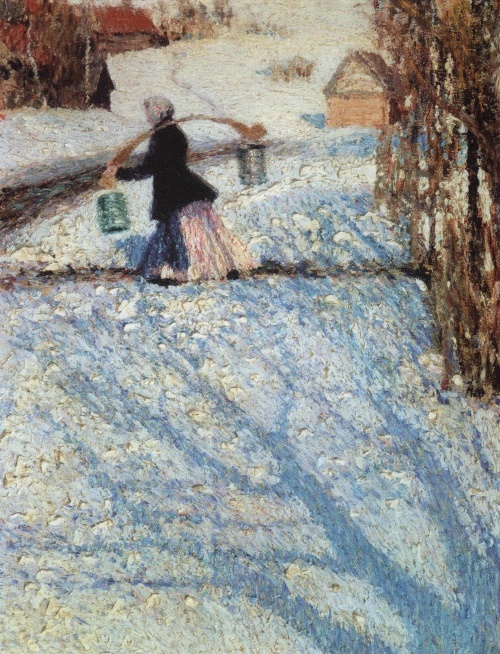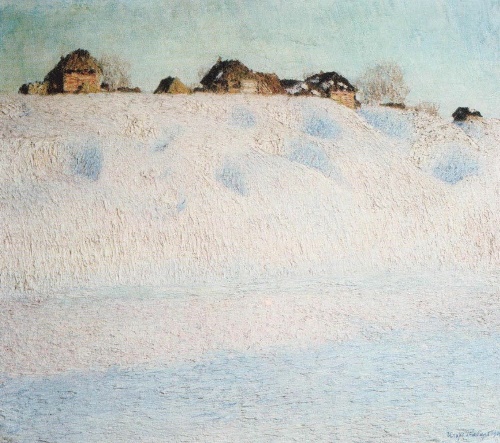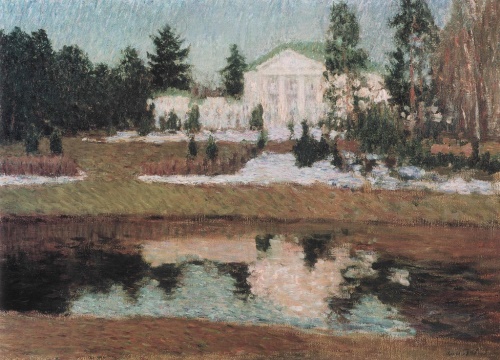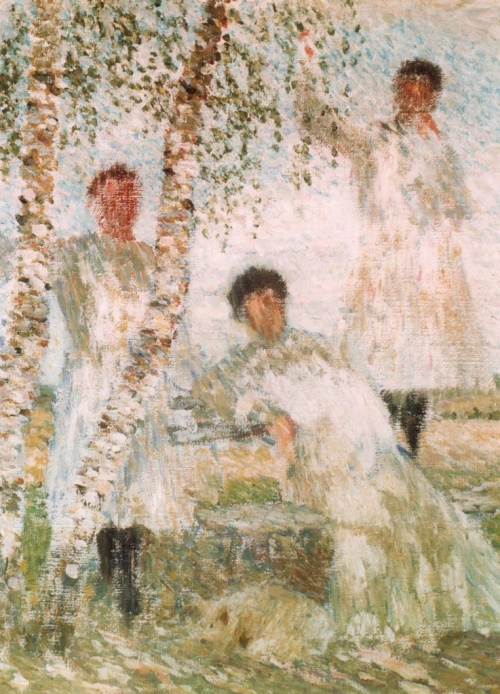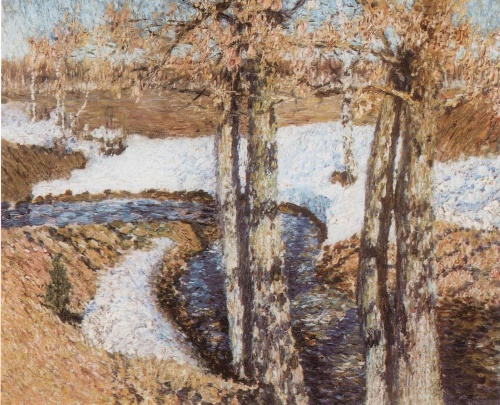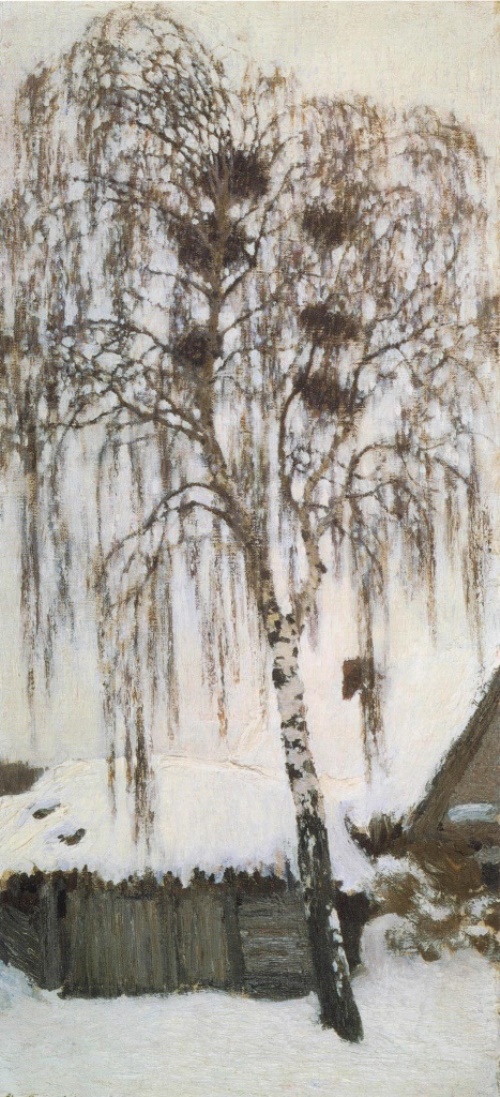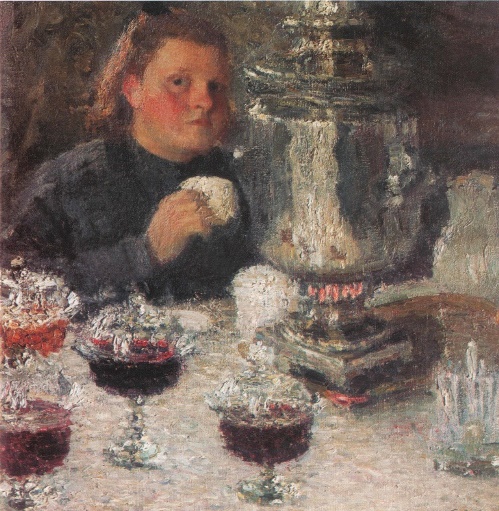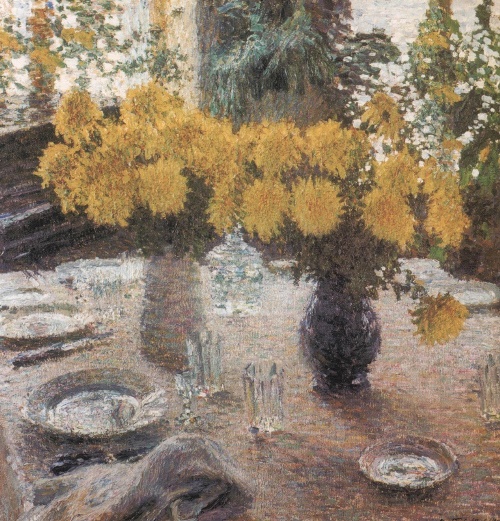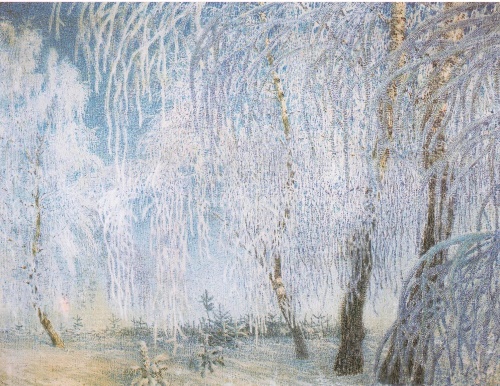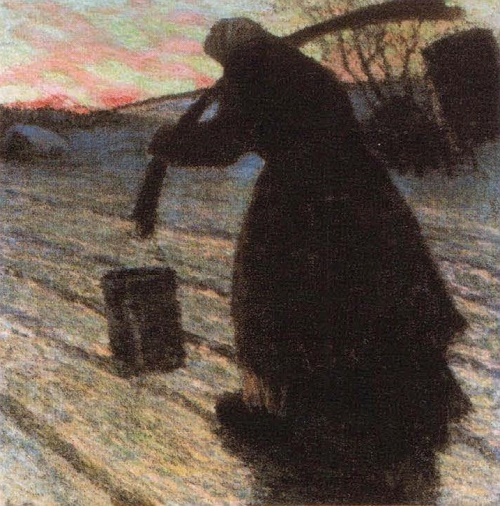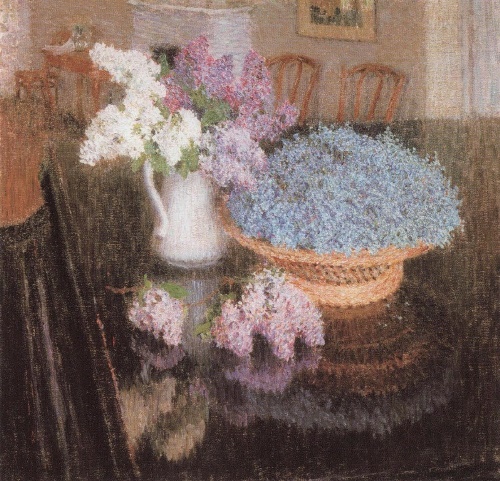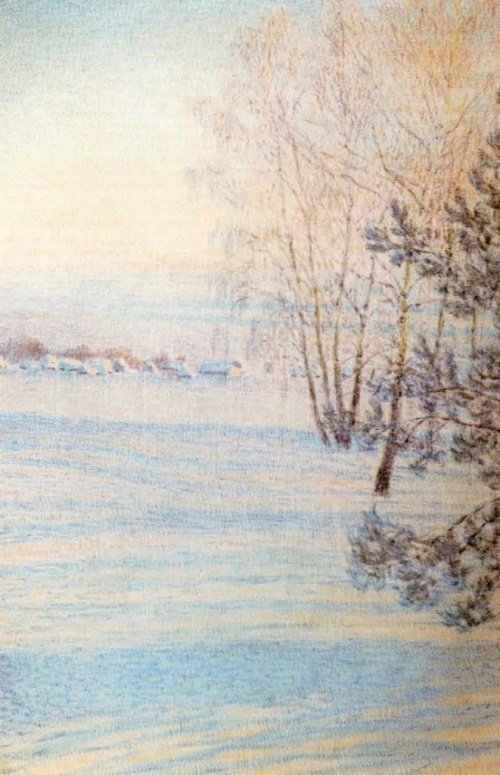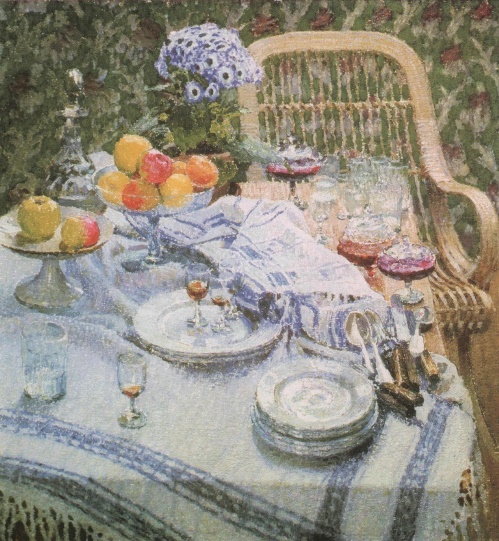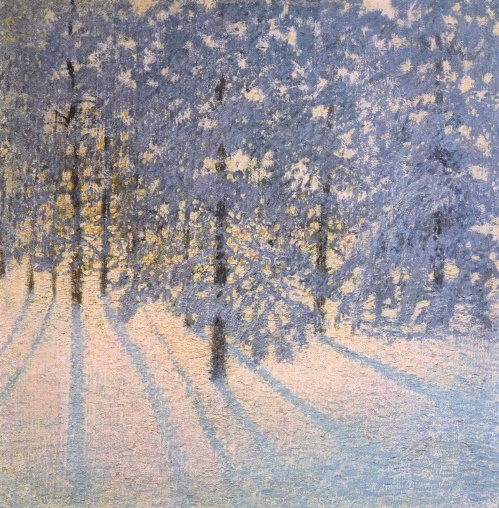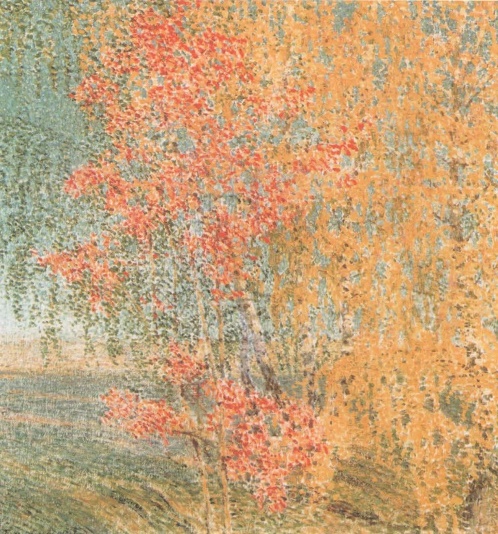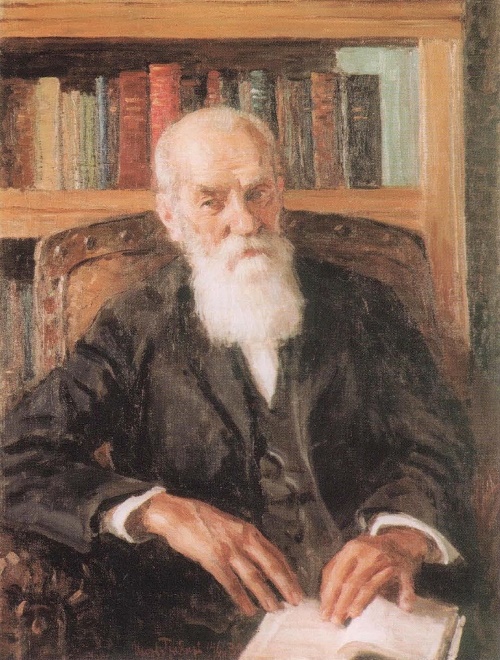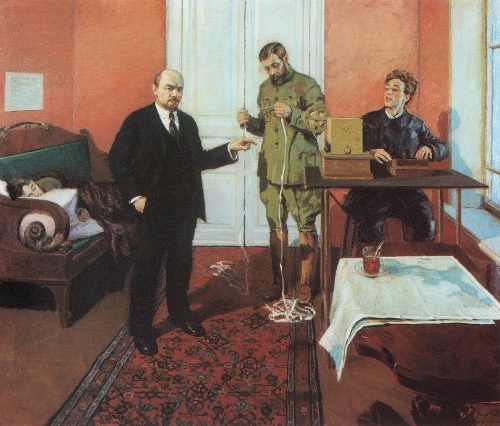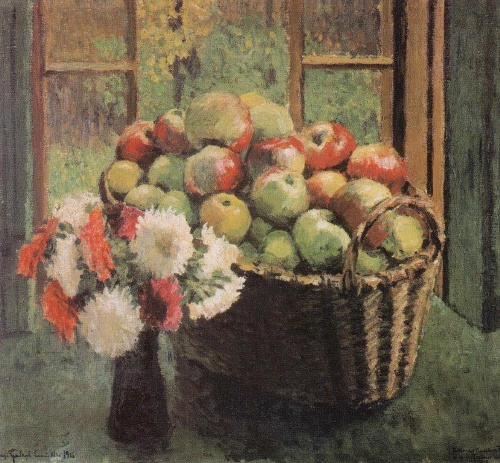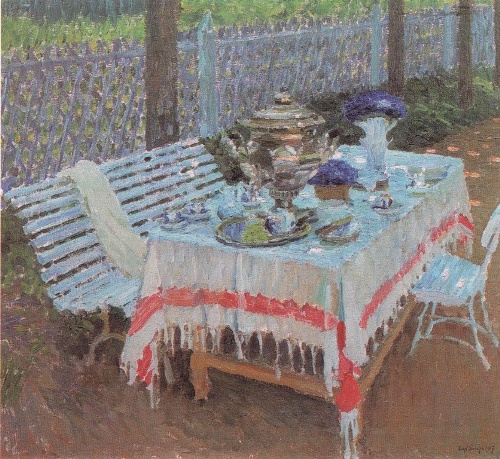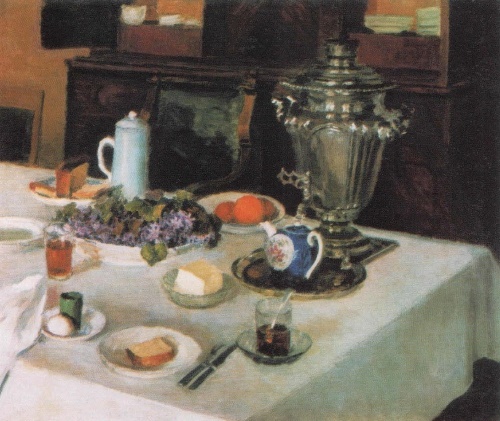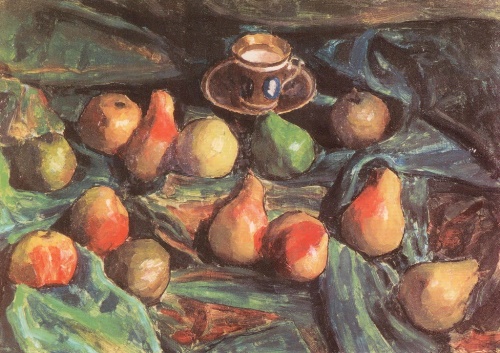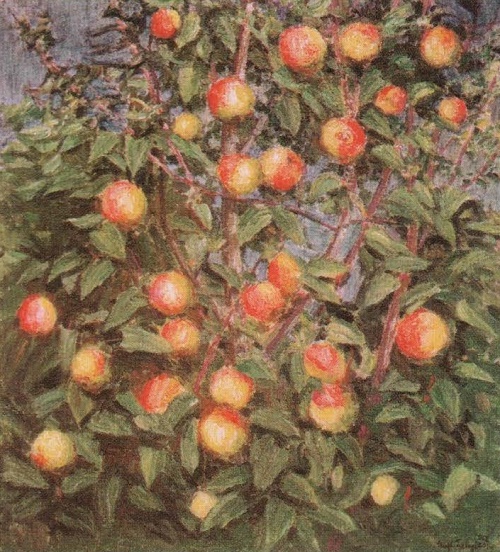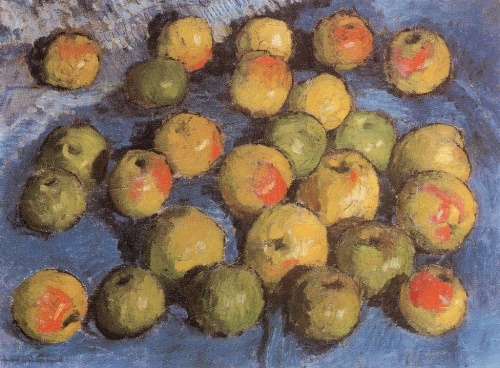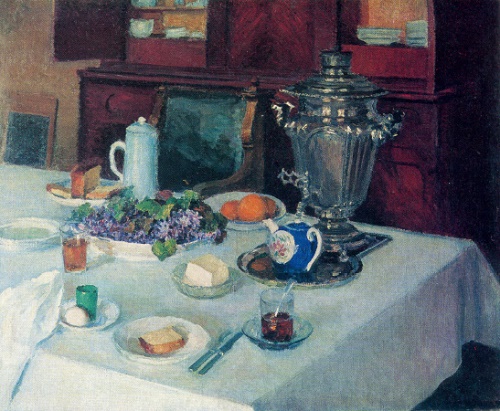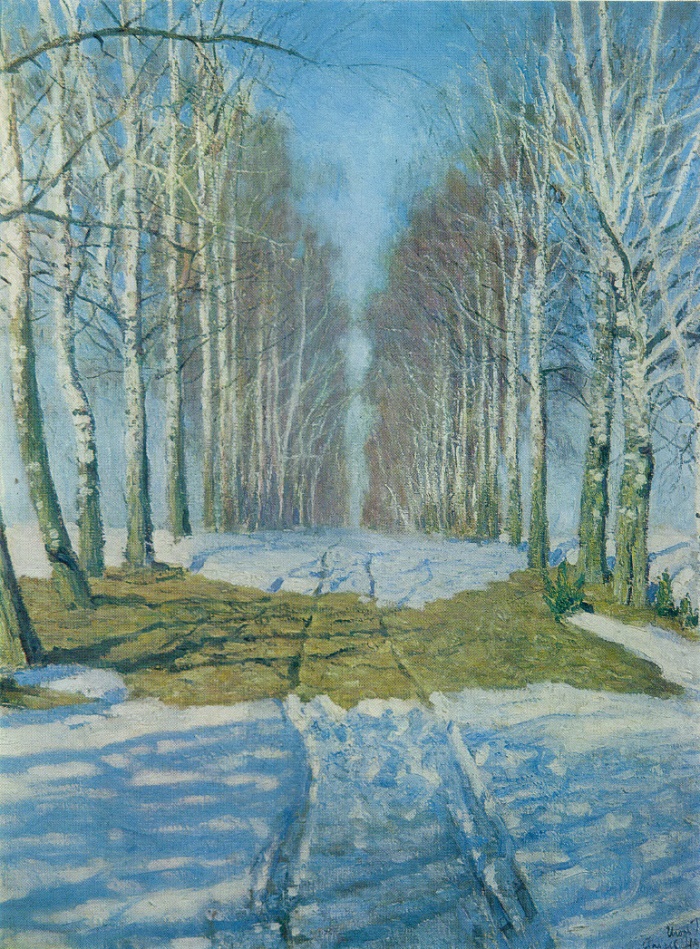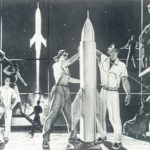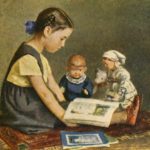Prominent Soviet artist Igor Grabar
Soviet artist Igor Grabar (1871—1960) – one of the most famous names in the history of Russian and Soviet culture of the twentieth century. A man of art, science, museum and restoration work, Grabar in his very long life showed the wonders of diligence, putting all of himself into art. In addition, origin and place of birth of Grabar, his family history is quite unusual. He was born March 13, 1871 in Budapest, in the Russian family that belonged to an ethnic group concentrated in the Ugrian Russia. This Carpathian region was part of the Austro-Hungarian Empire. And almost all the numerous relatives of Grabar, especially his maternal grandfather Adolf Ivanovich Dobryansky, were involved in the European Slavophile movement. Besides, they participated in the fight against “Magyarization” of Slavs of Austria-Hungary.
While family life was riddled with social and political interests, Igor spent his childhood in this particular atmosphere. However, there were dramatic scenes, including a trial of his grandfather and mother Olga Grabar that was nearly sentenced to death for “high treason”. And then followed emigration of his father, Emmanuel Ivanovich Grabar, a lawyer and a member of the Budapest Parliament. He had to hide for his “anti-Magyars” activity.
Meanwhile, his father moved to Russia in 1876, under conspiratorial name Khrabrov. And this name for a long time, until graduation, remained in the life of Igor Grabar. Besides, he signed some of his early works, such as illustrations for Gogol’s novels published in the 1890s with this name.
However, his childhood was not easy: from an early age Grabar lived almost constantly separated from his parents. And in all the abundance of relatives, he often remained in the care of strangers. In 1880, his mother took him to Russia, the town of Yegoryevsk of Ryazan province, where his father taught at the school. Unfortunately, family reunion did not happen. Due to circumstances, his father soon moved to Ishmael, but the boy stayed in Yegorievsk. As a result, he always retained a love for this quiet provincial town, where he got a lot of good friends, and where he was loved and looked after.
“I do not remember myself not drawing, without a pencil, or without watercolors and brushes” – wrote Grabar later. And he painted everything that came to mind. For example, he loved to copy portraits of generals of Russian-Turkish war of 1877- 1878 period from the magazine “Niva”.
The first artist he met in his life, became an art teacher at Yegorievsk grammar school IM Shevchenko, who graduated from the Moscow School of Painting and Sculpture. Thanks to him, Grabar met many outstanding paintings of Russian schools.
However, the difficult phase in his life connected with the Moscow Lyceum of Tsarevich Nicholas, where Grabar entered in 1882. Position of Grabar was very different from the rich boys, who did not let him forget about the poverty of his family. But he already had his own world, which allowed to escape troubles.
Meanwhile, Moscow of 1882 met Igor Grabar with huge All-Russian Art – industrial exhibition in the art department. There, the boy experienced the meeting with the best pictures of that time. In particular, already familiar by reproductions Repin and Surikov, Vereshchagin and Flavitsky, Perov and Kuindzhi, Vasiliev and Kramskoy.
For days, he lost at the Tretyakov Gallery, art exhibitions, and at friends’. In Moscow, he was looking for people and places associated with art. It was icon painting school, and apartments of students of Moscow School of Painting, Sculpture and Architecture, university friends of brother Vladimir. And among the latter he met with Dmitry Shcherbinovsky, a law student and artist. Thanks to him, he became acquainted with Abram Arkhipov, met with Vasily Polenov, and Sergei Ivanov. Shcherbinovsky had a strong influence on the Grabar, and offered him to receive university education.
Along with the main creative interests at the Lyceum, Grabar read a lot, successfully studied languages, and dabbled in literature. Finally, He graduated from Lyceum with a gold medal, and in 1889 entered the St. Petersburg University’s law faculty.
In addition to university studies, in the evenings, he wrote humorous stories for magazines. And work for magazines has become his permanent business for many years. Thus, Grabar painted illustration, wrote overviews of art exhibitions, critical articles, and biographies of the artists.
His student years, with all their infinite variety and work Grabar remembered “as a single, integral, endlessly fascinating, full of rich experiences, joyful life.” But painting remained his main interest. In the first year of university Grabar drew his first significant picturesque sketch, that had a hit with his friends from the Academy of Arts. It was the “Roof with snow” (1889).
Among the other works of the period of the university – “In the car, tram” (1891), “A lamp with a green shade” (1891), “Meeting with the child” (1892). During these years formed Grabar attitude to nature, which subsequently formed the basis of his manners. Already in 1892, he began to engage in an academic studio of Professor Pavel Chistyakov, a famous teacher, who had a special learning system and nurtured the great galaxy of Russian artists, including Polenov, Repin, Vrubel, and Serov.
Grabar graduated from the University in 1893, while listening to a full course of lectures on the history and philology faculty even more faithfully than legal. The decision was to continue studying in the Academy of Arts. So, in 1894 he became a student again.
Friends of Grabar were Konstantin Somov, Osip Braz, and Dmitry Kardovsky. For a short time at the Academy Grabar became acquainted with the artists – Muscovites, sometimes visiting St. Petersburg in connection with traveling exhibitions, including Konstantin Korovin, Valentin Serov, and Vasnetsov.
In 1895, Grabar made a long journey that began in Berlin, Dresden and Munich. But most of all he liked Italy. Once in Venice, spending in this magical city for two weeks, Grabar was forever in love with it, its beauty, architecture and artistic treasures of churches and palaces.
However, after returning, Grabar really could not breathe without Russian landscape, seen with new eyes. And experience of European painting helped him to realize new opportunities for embodiment of Russian nature.
Returning to live in Petersburg, Grabar decided to link his activities with the magazine “The World of Art”, where he found like-minded people. Besides, he became closer to the artistic direction that Diaghilev led in the magazine and exhibition activities.
Since 1902 Grabar began to deal with the history of art and the prospect of a systematic history of Russian art school. And Grabar proved himself as one of the largest European scientists possessing strong professional intuition expert in the field of attribution of works of art. Thus, main world museums consulted to him.
Meanwhile, the revolutionary events in Russia spurred innate activity of Igor Grabar. After the February Revolution, he began to work on preservation of artistic treasures. Besides, was a member of the Arts Council of the interim government. He continued this work after the October Revolution. According to Anatoly Lunacharsky, Grabar was one “of the large skilled intellectuals who simply and without reservation switched to the service of the Soviet government.”
Also, Grabar took an active part in the creation of the State Museum Fund. He redistributed artistic values by Russian museums, participated in the nationalization of the largest art collections, including the treasures of the Trinity Lavra of St. Sergius. And this work took place under the personal observation of Lenin. Noteworthy is the seizure of church property, the best examples of which got to museums, enriching the collection of decorative art.
In addition, as a representative of the Soviet artists and a major expert in the field of painting, Grabar traveled a lot around the world (1920-1930). For example, museums of France, Germany, Belgium, Holland, England, Italy, and Sweden invited him to be expert.
As a result of broadest activity of Grabar, the authorities highly appreciated him. Interestingly, he became the first Honored Art Worker, rank introduced in 1928. However, gradually Grabar tried to focus on the main for himself areas. Since 1925, the basis for him was the work of restoration workshops, for which he refused the directorship at the Tretyakov Gallery. Also, the work in the museum department, and teaching at Moscow University.
Meanwhile, in 1943, Soviet artist Igor Grabar became the director of the Russian Academy of Arts and the Institute of Painting, Sculpture and Architecture in Leningrad. At the same time, he became elected a member of the USSR Academy of Sciences. And a year later, at the initiative of Grabar and under his guidance established the Scientific-Research Institute of Art History of the Academy of Sciences of the USSR. Since the autumn of 1944 to the end of his life Grabar headed the team of scientists, which became the basis of the project, on which he worked all his life. Multi-volume edition “History of Russian Art”, developed by Grabar plan as a result of all his research activities, came out from 1954 to 1962 and still remains the only complete edition of this kind. Until the last days of his life composing and editing stories was his main concern.
The last work of Soviet artist Igor Grabar – Birch Alley (1959), painted in Abramtsevo, was the last tribute to the old nature of the artist’s suburbs, the beloved image – Russian birch. “… Art, art, art. From childhood until now it is for me – almost the only source of joy and sorrow, delight and suffering, admiration and resentment, the only true content of life”.
Soviet artist Igor Grabar
Source:
Soviet Art. 1917-1945. Moscow. 1977
Illustrated album “Igor Grabar, 2001”
